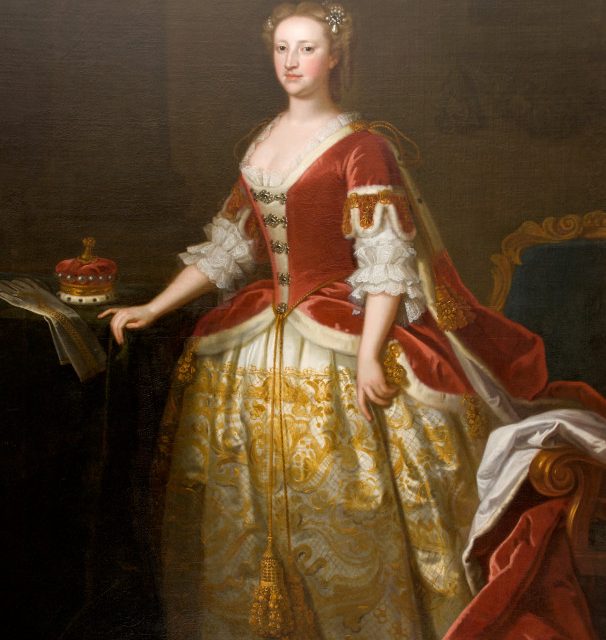

John St John, 2nd Viscount St John had his own Grand Designs for Lydiard House. But it was only when his wealthy wife Anne Furnese came into her inheritance that he was able to call in the builders.
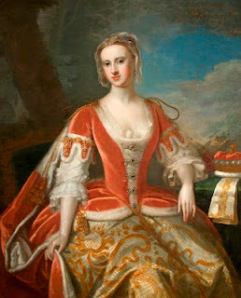
Born in c 1711 Anne was the daughter of Sir Robert Furnese and his first wife Anne Balam. During the early 18th century Sir Robert served as MP for Truro, New Romney and Kent. Rather too fond of the good life Robert hardly made his mark on politics, unlike his father, and was described by fellow Whig Sir George Oxenden who wrote to David Polhill in 1727 that he was “as active as a fat man can be. He sits at home most part of the day surveying the field of battle, and reviewing his forces as they are drawn out on paper and gives his directions to his agents and attendants who are writing for his success and assure his Honour of success.”
Sir Robert’s father Sir Henry Furnese had made his money as a capital merchant, dealing in hosiery, linen and fine lace. His support of King William in the Glorious Revolution of 1688 proved good for business and soon Henry was involved in some innovative experiments in public finance. Henry served as Sheriff of London in 1701 and was created a baronet in 1707. When he died in 1712 his son Robert became a very rich man indeed.
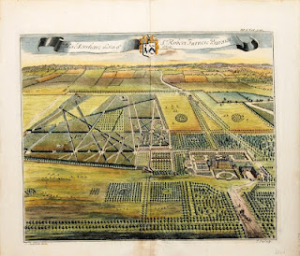
Anne probably grew up at the mansion house at Waldershare in Kent, bought by her grandfather in 1705. The Furnese family were dab hands at remodelling out of date mansions and Sir Henry had done a pretty good job on the 17th century mansion house to designs attributed to William Talman.
Following the death of Anne’s mother, Sir Robert married Lady Arabella Watson by whom he had a son Henry and a daughter Catherine. His third wife was Lady Anne Shirley who had two daughters, Selina and Anne who died as an infant.
Sir Robert died in 1733 and his 19 year old son and heir two years later. The estate was divided by Chancery between Anne and her two sisters. Along with farms and woodland in Kent and the manors of Whitstable and Ellenden, Anne brought at least £20,000 to the Lydiard coffers, worth something in the region of £32.9 million today.
Building work on Lydiard House began in 1738.
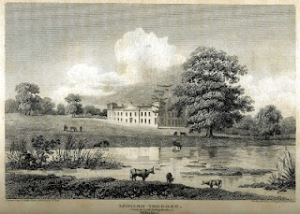
The attainted politician Henry, Lord Bolingbroke, had been quick to offload the Lydiard estate to his half brother John while retaining many of the financial perks, including the revenue from extensive woodlands in Lydiard Tregoze and Lydiard Millicent. While Anne negotiated with her father to purchase fixtures for her refurbished home, Henry, who had also inherited the furniture at Lydiard, wrote to say they could keep the pictures.
Like most enthusiastic house renovators, Lydiard wasn’t the couple’s first project. Prior to his marriage, John occupied 49 Brook Street in salubrious Mayfair. Following their marriage in 1729 John and Anne moved into a new build at 51 Brook Street, a house sited in approximately the middle of modern day Claridges.
For nearly ten years they divided their time between Lydiard, Battersea and Brook Street until 1738 when they moved to 75 South Audley Street. John paid builder Edward Shepherd £4,000 to complete two houses which the St John’s occupied as one property.
Sadly very little is known about the remodelling of Lydiard House. Was it Anne who kept a hand on the purse strings as the family shuttled back and forth between building projects – the 18th century version of property developer Sarah Beeny, supervising stone masons and comparing colour swatches with a baby balanced on her hip.
No documentary evidence survives to name the architect of the remodelled house. The favourite candidate is Roger Morris, assistant to popular architect Colin Campbell whose commissions included Wilton House and Longford Castle in Wiltshire.
It is thought that Nathaniel Ireson was the builder engaged on the Lydiard project. Henry Cheere is suggested as the sculptor of fireplaces in the Drawing Room, Dining Room and State Bedroom, which have features very similar to those in Ditchley Park, the home of John’s cousin George Henry Lee, Earl of Lichfield.
The remodelling of Lydiard was constrained by financial restrictions and it is believed that the house is only half the original design.
Henry, Viscount Bolingbroke wrote scathingly to his half sister Henrietta – “They have made them selves a proverb in the country for their stingyness.”
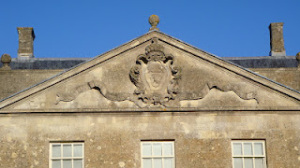
The house was pretty much finished by 1743 according to masonry in the attic. But after all their hard work, the couple had scant time to enjoy their new country seat. Anne died in July 1747. Less than a year later John remarried only to die within four months of the wedding. Anne is buried with her husband and his second wife in the family vault at St Mary’s Church.
Following Anne’s death Henry offered to help his widowed brother, but not surprisingly John chose to make his own arrangements for his young family.
Henry was to write Henrietta: “He took no notice of the offer, and I am satisfied with having done what I thought became me. I wish that the prejudices and habits which his late wife gave him, & which are none of the best, do not stick by him, she had sense and cunning , but I never knew a creature so avaricious, more selfish or more false.”
Lydiard House is a tribute to Anne Furnese for without her money it is unlikely the rebuilding would have taken place. Yet sadly the only comment on the lady herself comes from the brother in law who loathed her.
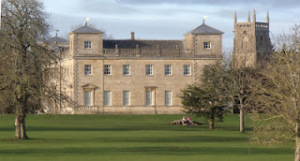
The two images of Anne Furnese in Coronation robes are published courtesy of Lydiard Park visit www.lydiardpark.org.uk